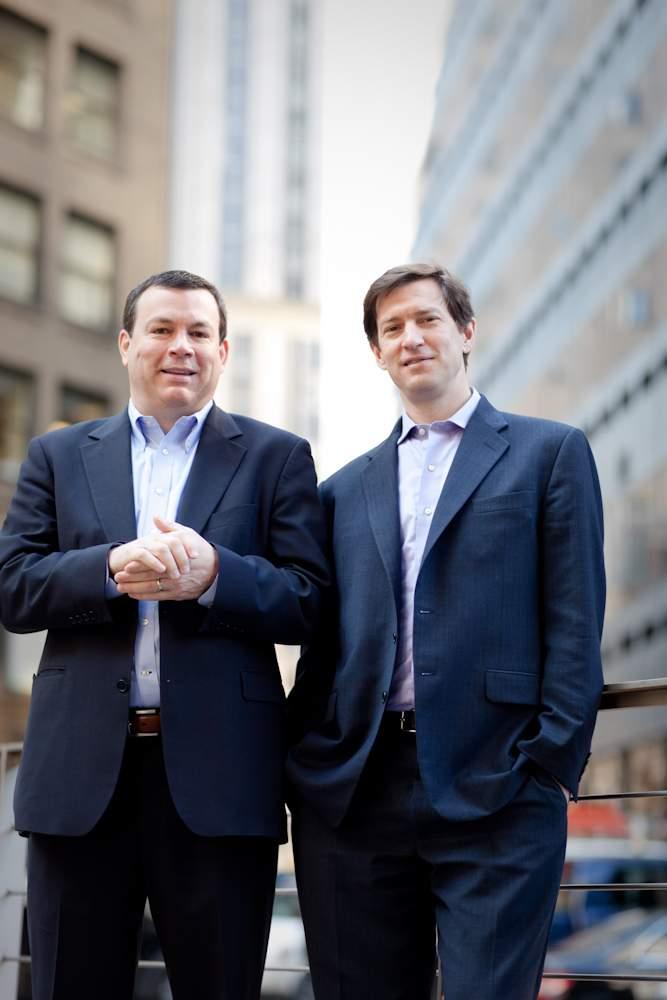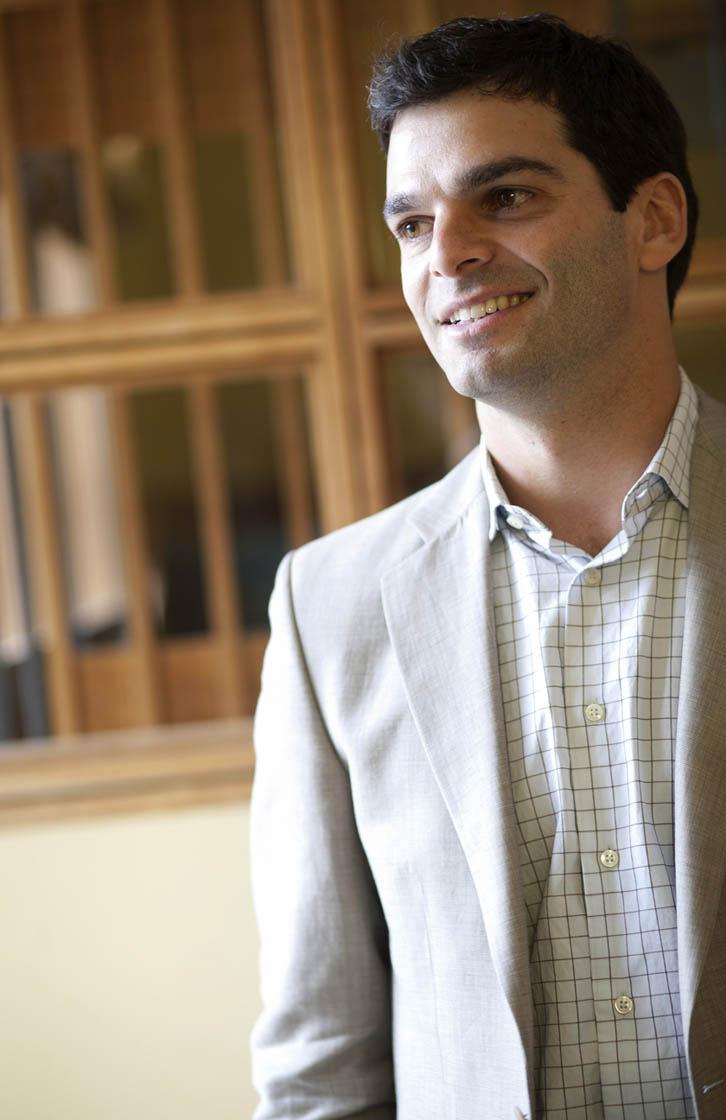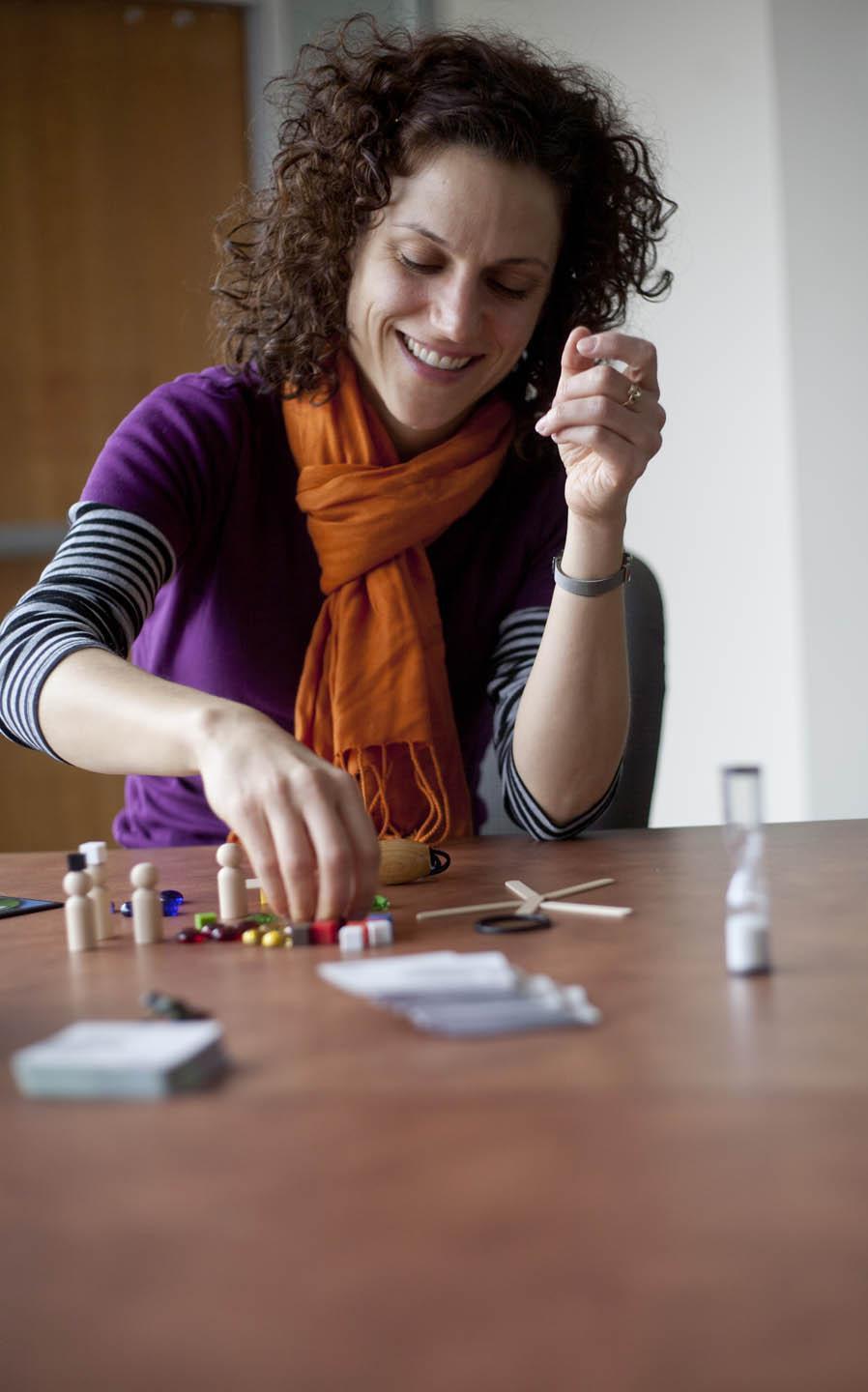Proof of Concept
With student interest in entrepreneurship at an all-time high, Tuck is organizing its e-ship resources to make sure every good idea gets the start it deserves.

“You hear that?” asks Tim Healy D’91, T’02, leaning forward in a swivel chair in his office on the 11th floor of an office building in downtown Boston.
Bright sunlight streams through the row of windows along one wall, while the fan in the office’s air-conditioning unit hums away in the corner. “It’s cooling the room just because I’m on this side of the building,” says Healy. “I just came from an office about 50 steps away that’s running a heating unit—if the manager knew to turn this off and turn that off, we’d be fine, but they don’t have any alarm.” Healy pays attention to energy. In fact, you might say he’s a little obsessed with it. As CEO of EnerNOC, it’s his job to play the role of that hypothetical building manager, albeit on a much grander scale. During times of extreme weather—a summer heat wave in the Northeast, for instance—homes and businesses running air conditioners and other appliances full tilt put tremendous stress on the energy infrastructure. If there’s too much, it can lead to a power outage. Healy’s team at EnerNOC makes sure that doesn’t happen, cutting deals with companies to automatically shut off their nonessential functions during peak times in exchange for a portion of the savings.
“We’ll turn off a third of the lights at the grocery store, turn the rock crusher from crushing rocks to maintenance mode, unplug all the forklifts in recharging mode,” he says. “Press a few buttons here in Boston, and suddenly we can make 7,000 megawatts of electricity disappear off the grid.” Healy makes it sound simple when, in fact, the U.S. electricity grid is mindbogglingly complex. The National Association of Engineers has called it the “greatest engineering achievement” of all time—putting it ahead of the automobile, spacecraft, and computers. Standing in EnerNOCs lobby, you can see why—on the wall, a massive map of the nation’s electricity grid is a spider web of colored lines and dots that belies the ease with which we flick our light switches on and off.
Healy first had the idea to do something to streamline the energy market when he entered Tuck in 2000. His father was in the alternative energy field, and he planted the idea in his son’s head that if customers were only able to track their energy use more wisely, they could create incredible efficiencies in the system—driving down demand, saving energy, and cutting costs across the grid. At the time, information technology was creating incredible opportunities to micromanage data on finances, human relations, and supply chains. But company profits and customer apathy kept energy information in a black box, with no one to help customers connect the dots to decrease energy usage overall.

By graduation in 2002, they had founded EnerNOC with two additional employees. By the time the company went public in 2007, they had more than 100 employees and $26 million in revenues. As energy prices continued to rise and interest in sustainability skyrocketed, they were poised to take advantage of the market. Now, five years later, the company has grown to roughly 650 employees and $300 million in revenue—with some 5,000 customers around the world. Healy walks across the office to his “desk,” a chest-high stainless steel podium that looks like something off the bridge of the Starship Enterprise, and clicks a few buttons. “We’ve saved customers over half a billion dollars,” he says. “That’s a pretty good amount of money.”
For all of their success, Healy says he and Brewster could not have launched EnerNOC without the support and encouragement of Tuck and its alumni. “If you were going to tell me 10 years after graduating that I’d be running a global corporation dramatically changing one of the largest industries in the world, and asked me where I should have gone to business school to prep for that,” he says. “I can tell you there’s only one place I’d choose.” He’s not alone. According to a recent analysis of its members by LinkedIn, Tuck ranks fifth among business schools whose graduates have started companies since 2000, behind only Stanford, Harvard, MIT Sloan, and the Haas School of Business at University of California, Berkeley. Tuck’s own numbers bear out the strong entrepreneurial drive: 10 percent of graduates report starting a business within 15 years of leaving Tuck; after 25 years, that number grows to 25 percent.
What makes Tuck graduates so entrepreneurial? Senior Associate Dean Bob Hansen points first to the school’s natural surroundings. With the mountains of New Hampshire as a backdrop, Hansen speculates that Tuck attracts students who prize “adventure and a frontier mentality.” These are not people who are going to be working at a desk the rest of their lives,” he says. Second, research shows that the most successful entrepreneurs are not mavericks but those who excel at creating partnerships and teams to carry forth their vision. “Tuck has an advantage right there,” says Hansen, pointing to the school’s small scale, residential focus, and emphasis on teamwork. “As a student, you leave here with a handful of really good friends—people you would trust executing your will—and then 250 people you know reasonably well, so you can say later, ‘Mary was in that marketing research class, and she was good at marketing. I wonder what she is doing.’”
As much success as Tuck has had in creating entrepreneurs, many still wondered whether the school could do more to help students get their businesses off the ground. The result of the deliberations? Tuck’s new Entrepreneurship Initiative, launched last fall, which acts as a clearinghouse for entrepreneurial resources. “When you come to Tuck, your mind becomes this big sponge and you start absorbing things you haven’t thought about before,” says Joaquin Villarreal T’08, manager of the initiative. “If we expose people intensely to entrepreneurial issues, maybe we can find that dormant interest in other students to start thinking entrepreneurially.”

There’s an ongoing debate in business circles about whether entrepreneurs are born or made. (One somewhat controversial study even suggests entrepreneurship is genetic.) Villarreal compares it to the quality of leadership—something that has inherent traits but that can also be taught. That’s a definition embraced by associate professor Ron Adner, who teaches the Entrepreneurship & Innovation Strategy elective. As he expresses in his new book, The Wide Lens, published this spring, the mistake many new entrepreneurs make is to focus so much on their own project that they miss the wider “ecosystem” of their industry, which can determine whether their idea ultimately succeeds or fails. “It’s not, How do you do a great job with your piece? It’s, How do you do a great job with your piece so it fits in a broader way?”
When students are serious about creating a company, however, there’s no substitute for actually creating one. That’s where experiential learning comes in handy, staring with the Introduction to Entrepreneurship course taught by adjunct professor Gregg Fairbrothers D’76. “I don’t feel like I teach entrepreneurship,” says Fairbrothers, an entrepreneur himself. “I guide people toward a process where they can’t help but teach themselves.” The distinction is crucial, he says. There are just two assignments in his course: that students come up with an idea for a company in the first 10 days, and that they are ready to make a full investor pitch in eight weeks.
Fairbrothers says the hard part for most people isn’t coming up with an idea—a recent poll found 60 to 80 percent of Americans thought they had a good idea for a business—but figuring out how to turn that idea into something practical. In his course, he challenges students with the risks and impediments they might encounter in turning their idea into a reality; if they can’t overcome them, they must change their idea—or kill it. “The problem is people fall so in love with their baby, they can’t leave it. They hold on to an idea way too long,” he says. “It’s just an idea, it’s not a baby. The whole thing about building value into a company is taking away the risks. You have to get into this mindset of not being afraid to ask the tough questions.”
That mindset was especially helpful to T’12s Gavin McGrath and Prasad Joglekar in launching the travel website Ruxpin. Their initial idea was to build a website that would help travelers calculate the total cost of a trip. But when they tried to validate the idea, they quickly realized it was more of a website feature, rather than a main focus. Next, they explored the area of group travel but found the dynamics were too complicated to simplify for the average traveler. Finally, they settled on a site to help business travelers pick hotels based on things that were important to them. Rather than spend time researching individual hotels on different websites, Ruxpin suggests hotels based on a traveler’s previous preferences and the preferences of similar travelers, putting a dollar value on each feature—whether that’s a pool, a business center, or an ocean view—and letting users determine how much each is worth to them.
At each stage of the process, McGrath and Joglekar refined their idea until they found something that would work. “The idea might be awesome or it might be awful, but it’s not until you start diving into the details that you come up with problems right away, and if any of those problems are insurmountable, you want to ‘fail fast,’” says Joglekar. “That’s what we did in class. Without spending too much money, we figured out how to rectify the weaknesses.” After their first year, the two entrepreneurs were able to further expand the idea with the support of Tuck’s Barris Incubator Program, which provides office space and modest funding of $2,500 to three entrepreneurial projects a year. McGrath and Joglekar built their entire site for $1,000 by outsourcing the development work, purposely emphasizing speed over quality to identify the kinks before getting too far along in the process. “The small stipend was helpful to us,” continues McGrath, “because it constrained us and helps us make good decisions about what we are going to tackle.”
Just as invaluable, however, were the tens of thousands of dollars in pro bono legal work the students received through the incubator to incorporate and deal with investor contracts. “We have friends who are on the hook for $100,000 in legal bills that are deferred until they earn money,” says McGrath. “The fact that we don’t have that is great for the business and great for investors too.”

The game became an obsession for Reiling and her friends, and she began buying random objects to create a prototype, play-testing it at a local coffee shop. When a customer offered to buy the game from her, she began applying to business schools to figure out how to make it herself. “The decision to me came down to Tuck and another school,” Reiling recalls. “At Tuck, I felt I would have better access to the people and things I would need to launch this company at a place that might be more open-minded to the broad array of possibilities.”
She embraced the “learning by doing” philosophy of Fairbrothers’ course, relentlessly play testing the game on campus, weeding out pieces, and adding new words according to feedback from players. Even so, Reiling didn’t think about everything needed to take the game to the next level until she met Richard Tait T’88, inventor of the game Cranium, who was visiting campus. At the Lebanon airport, while waiting for his flight to leave, Tait went through Morphology piece by piece with Reiling, suggesting not what could be added but how existing pieces could be better designed and packaged. “Looking back, it was obvious,” she says. “He was like, ‘You’ve got the concept down, but now you need to spend time on the other pieces. You are OK to move on.’” That was the encouragement Reiling needed to go to friends and family and raise the necessary funds to produce an initial 250 games. She sold them all within 10 days. Since then, sales have tripled every year for the last three years. “Tuck changed my life— that’s not a throwaway comment. I can’t see myself having the courage and maybe even the skillset without a Tuck degree.”
Building on those success stories, Villarreal says he hopes the new Entrepreneurship Initiative will help extend Tuck’s approach to entrepreneurship across campus. “That model is working really well; now the idea is trickling it down to all students, who are maybe not as intense but who still need the support,” says Villarreal. That includes not only Tuck students but students and faculty in the wider Dartmouth community. “Five MBAs in a room might not be the best guys to produce a revolutionary technology,” he says. “We’re reaching out to Thayer, Dartmouth Medical School, The Dartmouth Institute for Health Policy and Clinical Practice, and Dartmouth itself to figure out ways to integrate better.”
At the Greener Ventures conference this spring, Villarreal invited the entire Dartmouth community to think about the theme “Innovation at Dartmouth: What’s Next” with panels on international, medical, and environmental entrepreneurship. “The conference is basically an excuse for Dartmouth as a whole to think about innovation and entrepreneurship and encourage cross-campus collaboration,” says Villarreal. “Schools can get stuck in their own universes, and sometimes you need to make an effort to break through that.” To continue the momentum, the initiative has created an online meeting space called Start-Up Hub to initiate virtual discussions among MBAs and students and faculty at other Dartmouth schools.
Learning how to think big and develop game-changing ideas can be a marketable skill in any company, as Tim Healy has found at EnerNOC. The company recently inaugurated an “intrapreneurship” program, allowing one employee to leave his or her position to pursue a “big idea” within the organization, with a chance to earn a “million-dollar payoff” if it succeeds. The first recipient, appropriately enough, is a Dartmouth alum. Each fall, Healy and Brewster drive up to Hanover to speak to students in the school’s Advanced Entrepreneurship course about their experiences, bringing the advice they got from alumni a decade ago full circle. “When I go back to Tuck,” says Healy, “I think, ‘What if this is the year that something David or I convey touches one aspiring entrepreneur who wants to change his or her industry.”